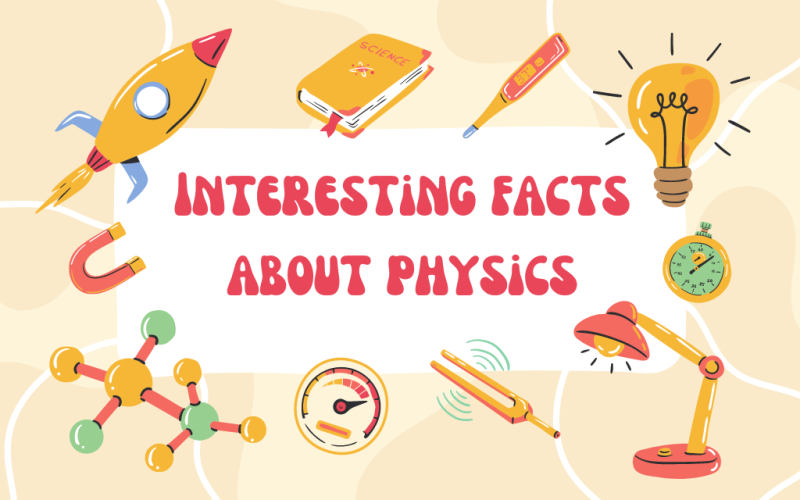Physics is the answer to all the logical questions on the surface of the earth. However, it is challenging but explains the concepts that we might have otherwise not questioned. These interesting facts about physics facts will either woo you or question your lifetime knowledge. The possibilities and facts of matter and the universe are covered here. So let’s dive right into it.
Table of Contents
- 1 1. Time Goes Faster on the Top Floor
- 2 2. Gravity- Weakest Fundamental Force
- 3 3. Sun Rays reach Earth in 8 mins
- 4 4. Light Reflects, Absorbs, And Refracts
- 5 5. 95% of the Mass is Due to Dark Objects
- 6 6. Phone Batteries are Composed of Electrochemical Reactions
- 7 7. Sun Doesn’t Change Colors During Sunsets and Sunrises
- 8 8. Light Passes Slow in Water
- 9 9. The Dead Sea would Never Let you Sink
- 10 10. Dead People Float Because of the Gas Release
1. Time Goes Faster on the Top Floor
Who said that? Well! Einstein’s theory of relativity proves that the closer the item might be to the earth’s surface, the faster time will vanish there. Einstein’s theory of relativity in simple words states that space and time are relative concepts. He said that the time may run faster or slower depending on the point of reference of the onlooker.

2. Gravity- Weakest Fundamental Force
Four fundamental forces work on different forces and strengths. These are Gravity, strong interaction, weak interaction, and electromagnetism. Out of this Gravity is the weakest fundamental force and has a strength of less than one-millionth of a millionth as compared to a strong nuclear force.

3. Sun Rays reach Earth in 8 mins
The speed of the light is 299,792,458 m/s and the sun is 93 million miles away. Therefore it takes approximately 8 minutes for the rays of the sun to reach to the surface of the Earth.
4. Light Reflects, Absorbs, And Refracts
Light travels in straight lines unless any object obstructs its flow. If the obstructing object is a mirror it will reflect, if it is an opaque object it will be absorbed, and in case, it is passing through a medium, it will refract or bend.

5. 95% of the Mass is Due to Dark Objects
The total mass of the galaxy is 2 × 1012MSun. In total 95% of the mass is covered by dark matter that emits no electromagnetic radiation.
Also Read- Reflection and Refraction Study Notes
6. Phone Batteries are Composed of Electrochemical Reactions
The batteries on your mobile phone run on a reaction called electrochemical that converts chemical energy into electrical energy.
7. Sun Doesn’t Change Colors During Sunsets and Sunrises
We see different shades of sunrise and sunset but it is not the sun that changes the color it is the difference in the atmosphere because of which wavelengths react differently.

8. Light Passes Slow in Water
Do you ever wonder why your face looks funny in your reflection in water? The surface tension in every molecule of the water warps the image you see in it.
9. The Dead Sea would Never Let you Sink
Wow, isn’t it? The salt content in this sea makes it very dense which is why obviously you will always float and not sink in the Dead Sea.

10. Dead People Float Because of the Gas Release
When a person is drowned, the lungs instantly get filled with water that makes them sink. But after a while body starts releasing all the gases which is why they come to the surface.
We hope we were able to amaze you with these interesting facts about physics, you can also check out the physics archive for more such information. We are sure you might also like reading Psychology Facts About Human Behaviour.
 One app for all your study abroad needs
One app for all your study abroad needs













